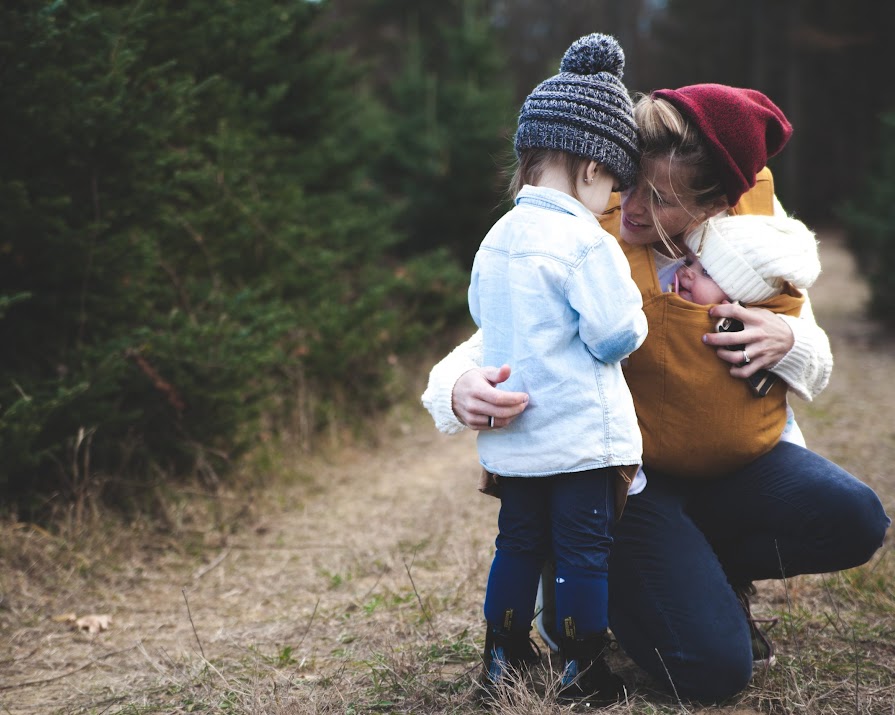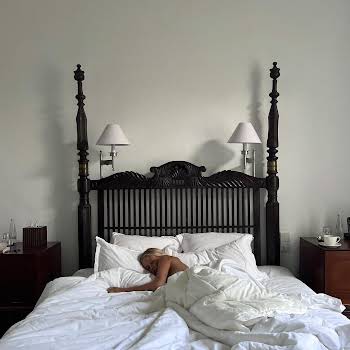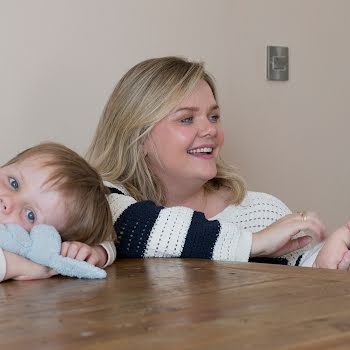
How to work with the avoidance trap when dealing with your child’s anxiety
By Julie Meehan
07th Aug 2022
07th Aug 2022
In the third part of a new series, Clinical Psychologist and Parent Guide, Dr Julie Meehan helps parents spot the not-so-obvious signs of anxiety in children.
In the previous pieces in this series on anxiety in children, we looked at recognising the signs of anxiety and how naming anxiety can help to tame anxiety. My hope is that these first steps will give you a firmer foundation when you are working with your child and their experience of anxiety.
Strategy #3
Reality versus concept
Full disclosure: I know well that breaking anxiety into steps is an elegant concept, but in reality it rarely looks that way. When you’re faced with a trying or distressing situation with your child, where you think anxiety might be showing up, but you’re not sure, pulling out a 5-point plan on how to approach same can seem redundant and ineffectual.
Before I go on to tell you that breaking it all down into steps is the most effective way to approach these trying and often distressing situations, let’s turn to the most common form or behaviour that shows up for children, young people – and yes, adults too -–when we feel anxious: avoidance.
The avoidance trap
One of the defining behaviours we present with when we feel anxious is that of avoidance. Our brains are wired to avoid pain and discomfort, and so it makes complete sense that we are driven to avoid any situation, person or thing that has triggered a sense of threat and anxiety for us.
It can be such a relief in the short term to not have to face that which causes us anxiety, but the problem is that in the longer term, we fall out-of-practice in using our coping skills to face the triggers that cause us difficulty and overwhelm. The more out-of-practice we are in exercising our coping skills, the less confidence we have in ourselves to meet challenges, which in turn leads to decreased sense of self-worth. We end up getting stuck in a negative pattern of behaviour that is often called the avoidance trap.
The Dilemma: to ‘push’ or ‘not to push’?
In the past, parents were often scolded for helping their children to avoid certain situations that caused them fear, and instead were encouraged to push their children to face these difficulties no matter what. All to avoid falling into the avoidance trap.
But it is not as simple as that: sometimes a child is not ready or fully equipped to face their fear head on – they may need some more support and preparation. At other times they do have all the resources they need, they just need centred and loving encouragement to meet their fear. It can be very difficult as a parent to know what to do when your child is actively avoiding something or someone – do you push them or not?
Three things to remember
If your child is showing reluctance or resistance in going places or doing things, it can be helpful to remember these three things:
- You are not alone. There are probably thousands of parents and children in the same place that you are right now – such is the pervasiveness of avoidance as a manifestation of anxiety.
- Sometimes, knowing whether to encourage your child to give the thing a go, or take a different approach is not an easy one to call. You are being asked to draw on your wisdom, intuition, experience and your sense of your child to know what the ‘best’ thing to do is, in this moment. All you can go with is your best knowing at the time.
- Err on the side of anxiety – meaning that if avoidance is showing up, but you’re not sure if it is anxiety, it more than likely is anxiety.
‘Pushin’ or Cushion’?
Coming back to the dilemma, to push or not to push your child, Dr. Dan Siegel, neuropsychiatrist and author, and his psychotherapist colleague Dr. Tina Payne Bryson suggest you apply the ‘Pushin’ or Cushion’ strategy where you ask yourself, “does my child need a gentle but firm nudge right now, or do I need to cushion/support them a little bit more?”
I love this phrase. It allows you to drop this question into your awareness, and orient you to sensing what your child might be feeling, and to understand that their behaviour is motivated by a need to feel safe. It also allows you to feel like you have a choice. Do you gently encourage them to give it a go because you have a sense that they can do this, or do you feel that their anxiety is so great right now that they will be flooded and overwhelmed?
Cushion and Pushin’
I like to use this phrase in a slightly different way: I see the Cushion as the compassion and insight we can bring to the situation, even if we are exasperated at our child’s indecision and we are beyond late for whatever it is that our child is avoiding going to. That compassion and insight, even if it takes all your effort to muster it up, allows you to connect with your child.
Remember, connection calms the nervous system. The more your child feels that you get what’s going on (even if you don’t like it) and understand that they are not loving it either, this engenders a connection between you that produces feel-good neurochemicals in your child’s brain (and yours too) that allow regulation.
Then it can feel easier for them and you to make a call on whether you need to sit this one out, or use all your resources to encourage them to give it a go.
Just Cushion
There are times when we take Pushin’ out of the equation, and we just have Cushion. Knowing when your child is too distressed and dysregulated to go for the Pushin’ approach involves you feeling into your intuition and assessing the situation: will they cope if they go? Will they be so flooded with emotion that they will want to escape, or will they freeze? Giving yourself the Cushion that you need to trust your gut, allows you to feel more grounded and self-connected, which allows you in turn to connect with your child, and ultimately connection calms.
Sometimes avoidance is the best option. If this happens for you and your child, know that in time you can work on ways to support your child to feel more regulated, so that in future they will feel more resourced for that gentle Pushin’ nudge.
Give it a go
If avoidance, reluctance or resistance is showing up in your child, remember:
- You are not alone, it is the most common behavioural manifestation of anxiety.
- Making a call on whether to apply just Cushion or Cushion and Pushin’ is not an easy one.
- If you are not sure if your child’s behaviour is driven by anxiety or not, err on anxiety’s side, and take the following steps, it will do no harm, but could do a lot of good.
Tune in: Trusting your own instinct involves tuning into how you are feeling in the moment. Allow for feelings of anger, frustration, exasperation, and stress, this is normal and totally OK. Can you sense if there is a knowing beneath the louder emotions? One that might indicate whether you have a Just Cushion or a Cushion with Pushin’ situation on your hands.
Attune to your child: When you have tuned in to yourself more, then you can attune to your children’s words, behaviour and feelings. These are signposts to tell you what’s going on. Remember, you know your child best. This type of tuning in takes practice and to be honest, all of it is about trial and error, asking yourself, “what worked well the last time we were in this situation; what didn’t work well?”
Positive phrasing: If you try the Pushin’ approach, it can be helpful to use language which is encouraging and collaborative, such as, “let’s give it a go” so that they feel that you are with them as they meet their difficulty. Once your child has given it a go, you can use terms such as, “you coped so well”, “you are really working on your coping skills” to emphasise the fact that they are developing their skill set to navigate anxiety and to foster greater resilience.
Taking it gradually: When you take the Just Cushion approach, remember that you are also encouraging your child to meet their difficulty by “giving it a go”, but in a more gradual way. You are showing them that you see that they are too overwhelmed right but that in time, they can build their skills to regulate their nervous systems and gain confidence – this is a marathon not a sprint.
Scaffold: With these approaches, you are scaffolding your child, which means providing layers of support that in time you can withdraw when your child is feeling more confident and skilled. They may not need the layers forever, just for now and that’s ok.
The more you practise the Pushin’ or Cushion strategy, the more you will get the feel of what’s needed in a situation, and this will help to develop the trust your child has in the relationship that you share. At the end of the day, all of the strategies that you are applying to support your child with anxiety are designed to strengthen your relationship with your child: the secure parent-child relationship is the bedrock for a child’s ability to learn to place trust and confidence in themselves, and to thrive.

© Julie Meehan, 2022
Dr Julie Meehan is a Clinical Psychologist, Parent Guide and (Imperfect) Parent.
Dr Julie has developed an evidence-based, step-by-step pathway for parents to follow that guides you to create more connected and trusting relationships with yourself and your child, allowing you both to meet and grow from life’s challenges, and to thrive.
You can follow The Pathway Home for Parents through Online Self-study Courses, Live Programmes and through Dr Julie’s One to One Parent Guidance Packages on www.juliemeehan.com























